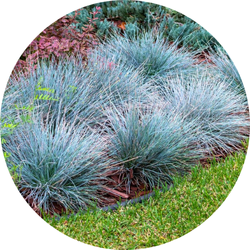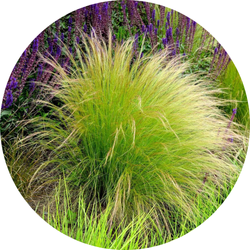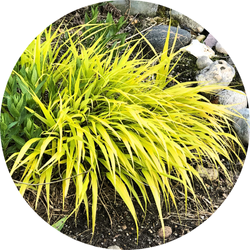
When gardening in a challenging climate like Colorado’s, the timing of planting can impact the success of our gardens. While spring is often hailed as the prime season for gardening, and summer might seem tempting, there’s a quieter, less celebrated time that offers significant advantages: early autumn. Planting trees, shrubs, and perennials in the fall can lead to healthier, more resilient plants, and a garden that’s ready to thrive come spring. Here’s why autumn should be your go-to season for planting.
Cooler Temperatures = Happier Plants
Colorado’s summers can be scorching, with temperatures frequently reaching highs that stress plants—especially newly planted ones. In contrast, early autumn brings cooler days and nights, which are much gentler on young roots. This milder weather reduces the risk of transplant shock, allowing plants to establish themselves more comfortably. With the intense heat of summer behind us, your new trees, shrubs, and perennials can focus on root development without the added burden of extreme temperatures.
Extended Root Growth Period
One of the most significant advantages of fall planting is the extended period for root growth. In the fall, soil temperatures remain warm enough to encourage root development even as air temperatures drop. This allows plants to develop strong, deep roots before winter sets in. By the time spring arrives, your plants are already well-established and better equipped to handle the growing season’s demands. In contrast, plants set in the ground during summer may struggle to establish roots while also trying to maintain top growth.
Reduced Watering Needs
In Colorado, water conservation is always top of mind, and fall planting offers a water-wise solution. Cooler temperatures mean less evaporation and reduced water stress for your plants. Additionally, autumn rains can help provide consistent moisture, reducing the need for supplemental watering. Newly planted trees, shrubs, and perennials will still need regular watering to get established, but the amount required is typically much less than what’s needed during the hot, dry summer months.
Fewer Pests and Diseases
Summer gardens are often plagued by pests and diseases, which can make establishing new plants a challenge. However, many of these issues begin to wane as the weather cools in autumn. This reduction in pest and disease pressure means your new plants are less likely to face immediate threats, allowing them to settle in and grow without the need for constant vigilance or treatment. It’s a natural way to give your plants a healthier start.
Enjoy Better Selection at Nurseries
While spring and summer might be the busiest time at nurseries, autumn often brings a more curated selection of hardy plants that are well-suited to Colorado’s climate. Many nurseries, like ours, offer sales or discounts as they clear out inventory before winter, so you might find high-quality trees, shrubs, and perennials at a great price. Plus, with fewer customers around, you’ll have more time to browse and get advice from knowledgeable staff without feeling rushed.
Get a Head Start on Spring
By planting in the fall, you’re essentially giving your garden a head start on the next growing season. Come spring, when everyone else is just starting to dig, your fall-planted trees, shrubs, and perennials will already be settled, ready to burst into growth and bloom. This can lead to earlier flowering, stronger plants, and a garden that looks more mature and vibrant from the get-go.
If you’re looking to create a resilient, thriving garden in Colorado, consider making early autumn your prime planting season. The cooler temperatures, extended root growth period, reduced watering needs, fewer pests, and the chance to get a head start on spring all make fall an excellent time to invest in your garden’s future. So, as summer winds down, don’t pack away your gardening tools just yet—embrace the benefits of autumn planting, and watch your garden flourish.






